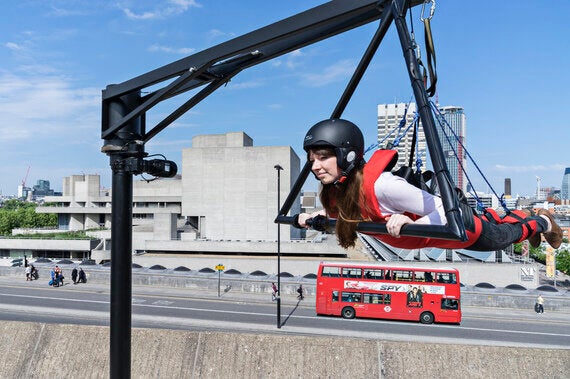
Art is usually a passive experience - you observe paintings, sculpture, photography or video, take in what is in front of you and make a judgment based on a whole raft of personal reasons - both conscious and subconscious. What Carsten Holler's new exhibition at Hayward Gallery provokes is when you become part of the exhibition, and how your explicit actions and decisions shape your experience.
This major exhibition - Carsten Höller: Decisions - presents a wide range of Carsten's works from new creations, such as Isomeric Slides and Two Flying Machines, to early artworks, such as The Pinocchio Effect (1994) and Upside Down Goggles (1994-1009). And the variety of the works is impressive, from site-specific installations to videos, from kinetic sculptures to lightworks.
And almost all of the pieces demand interaction from the visitor. You can push the Flying Mushrooms sculpture round and round, and watch the distinctive red mushrooms whirl and swirl above you. And, if you're lucky enough to be a child, you can clamber into Dice and roam around inside this, well, playcentre.
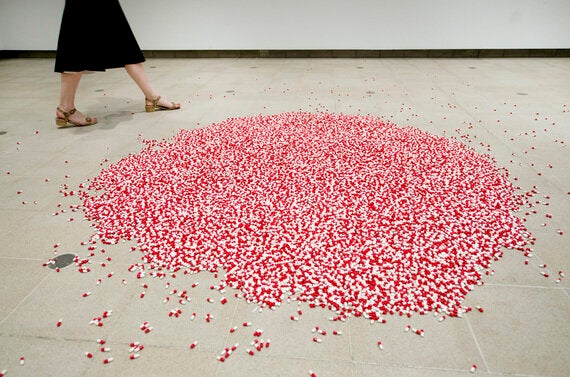
And there are decisions to make too. Do you want to walk through the pitch-black corridors of Decision Corridors? And do you choose to swallow the unmarked tablets in Pill Clock?
Carsten Höller considers the visitor's presence a key part of his work, that his pieces are not in isolation from them. And making our decisions isn't meant to be straightforward. Carsten calls this 'active uncertainty.' And this is echoed by the curator of the exhibition, Ralph Rugoff, who wants to explore "a frame of mind conducive to entertaining new possibilities."
The sense of fun and excitement is palpable, especially around the big draw theme-park-esque rides such as the flying machines and the slides. The queue alone for Upside Down Goggles was over 30 minutes long, too long for me to queue and have a go. But it was certainly intriguing watching participants put on the goggles, which invert the world around you, and struggle to even take one step forward.
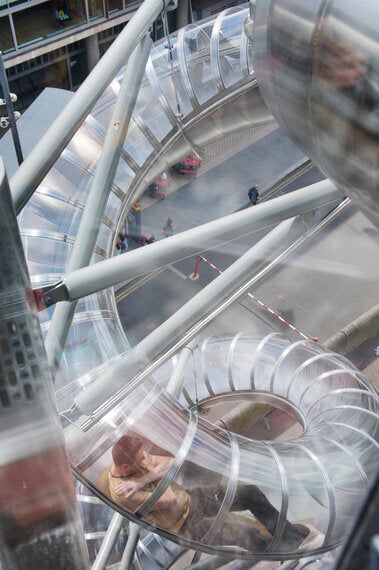
The act of observation is supposed to be part of the experience, and one that I probably wasn't that comfortable with (which may indeed be the point). To gawp at others isn't art to me, nor is it particularly polite, but it is revealing.
There is a viewing window out over Two Flying Machines, where participants lined up in their droves to be strapped into paragliders fixed to a carousel. Once in, the visitors went round and round, as if flying over the streets of London below them.
The participants are allowed to take their mobile phones on to the machines with them and it was fascinating how many felt the need not just to record the experience, but then, evidently, send it out on social media whilst they were still strapped to the machine.
This observation led to many barbed comments around me on mobile phone addiction. This was particularly true as we watched one woman more focused on reading her text messages and tweeting out her photos than actually being present in the experience and enjoying the view over London.
Maybe there is something in this 'art is experience' thing after all.
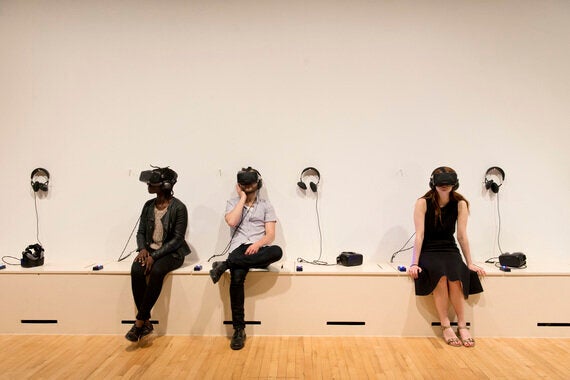
It's not a surprise that these fun participatory exhibits are the most popular. At times it did feel like I was in a theme park or even the Science Museum, where people are encouraged to test devices that influence proprioception (how our brain imagines changes to parts of our body when certain muscles are stimulated), as in The Pinocchio Effect, or wear 3D headsets to transport themselves to a winter forest, as in The Forests.
Decision-making isn't the only theme in the exhibition. The subject of twins, doubles, also runs through many of the pieces - there are two slides and two flying machines, two robotic hospital beds roaming the ground floor of the gallery, even two day-glo pink polystyrene snakes.
Though there's evidence all around of this interest in replication, in copies, I'm not sure that this message really hit home.
The large upper gallery has vast ceiling-to-floor mirrors on its walls. This is actually a piece of work, Half Mirror Room, and, per the exhibition guide, "offer(s) a glimpse of what we look like to the rest of the world." What, like how an actual mirror does all the time? Is putting up a mirror now art?
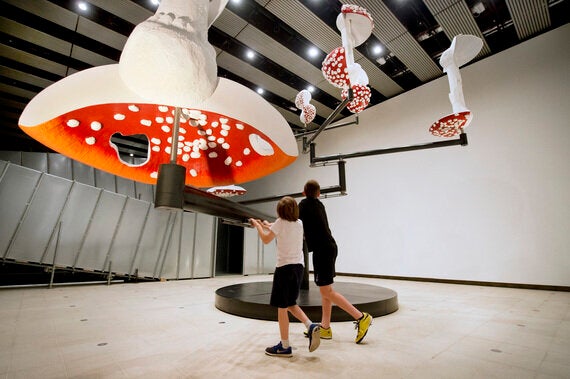
Also in the upper gallery there is an actual piece called Twins. A piece that takes over a slim corridor. Two rows of TV screens are on either side and from each screen, a twin sings or speaks contradictory sentences at their own twin who is on the screen on the other side. Interesting but it was telling how many passed straight through, more interested in getting to the slides.
Is all of this this art? I don't know. Did it challenge my preconceptions of myself and / or society? Well, I was aware of my reaction to each piece - my refusal to go into the darkness of Decision Corridors for fear of claustrophobia, or the fact that I stood at Pill Clock for an age, obsessively counting the seconds between every pill dropping on to the pile, and wondering why anyone would pick up a pill from the floor of the Hayward Gallery and swallow it.
These acts in themselves revealed something about me. It caused a reaction. But then everything in life causes a reaction. I have an emotional reaction every morning during rush hour on the Tube but that doesn't make my commute art.
Or does it? I don't know anymore. And I guess that was the most fascinating part of this exhibition - that I have no clue whether any of this constitutes art. Is a slide art? Probably not. But I still went on it anyway because I knew it would be fun.
Hayward Gallery, London to September 6, 2015
Image Credits:
1.Carsten Höller, Two Flying Machines, 2015 © Carsten Höller. Installation View Carsten Höller l Decision, Hayward Gallery
2.Carsten Höller, Pill Clock 2011_2015 © Carsten Höller. Installation View Carsten Höller l Decision, Hayward Gallery
3.Carsten Höller, Isomeric Slides, 2015 © Carsten Höller. Installation View Carsten Höller l Decision, Hayward Gallery
4.Carsten Höller, The Forests, 2002_2015 © Carsten Höller. Installation View Carsten Höller l Decision, Hayward Gallery
5.Carsten Höller, Flying Mushrooms, 2015 © Carsten Höller. Installation View Carsten Höller l Decision, Hayward Gallery